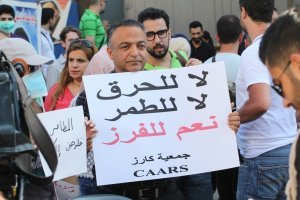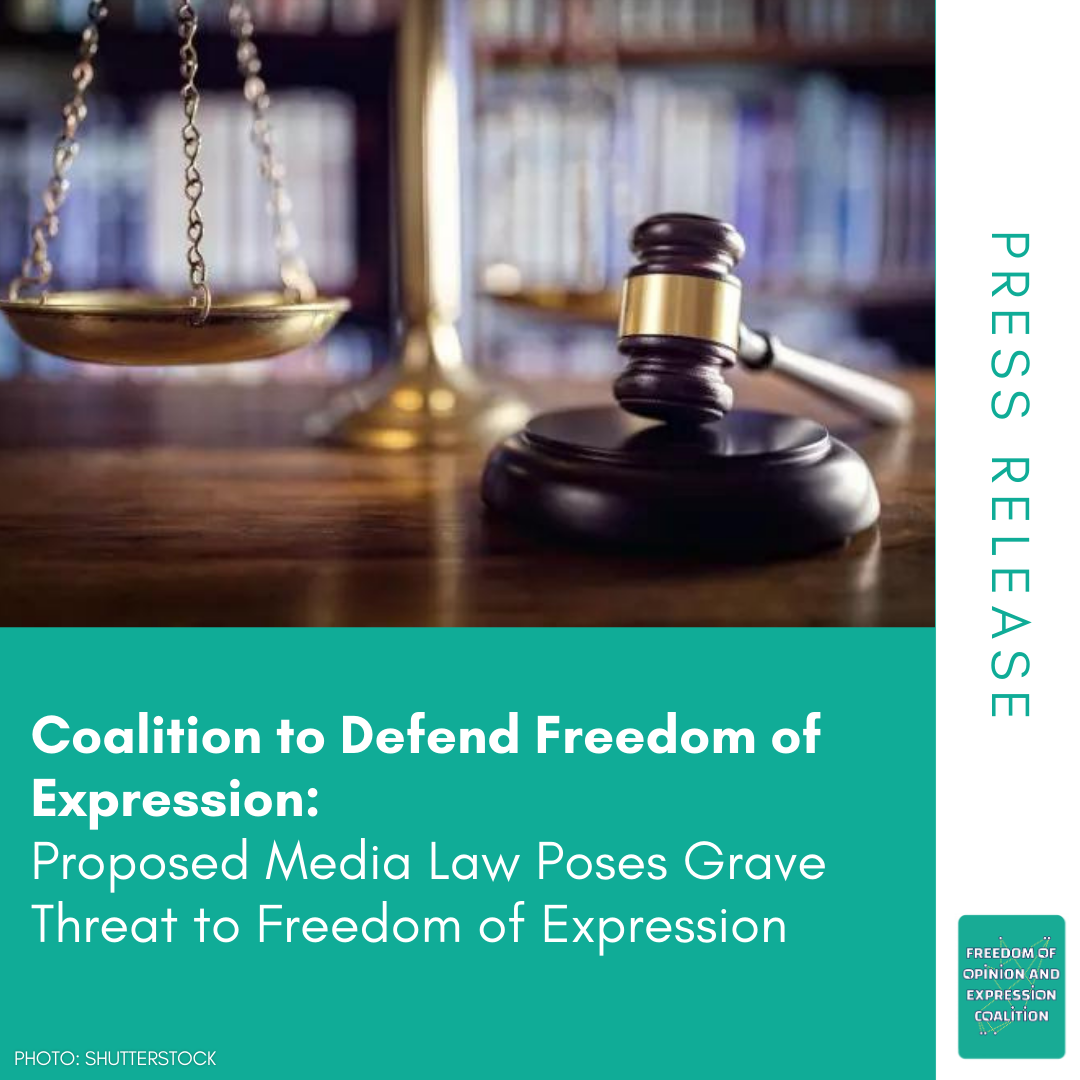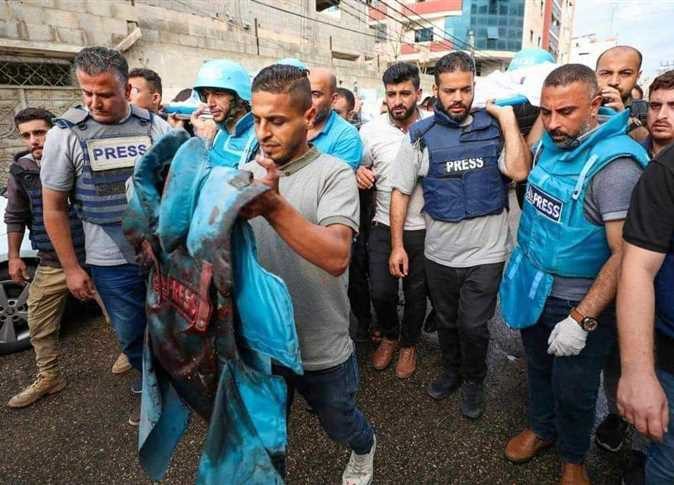Garbage Crisis in Lebanon – 1997: Same Policy, Repeated History

Since July 2015, Lebanon has been suffering from a garbage crisis that threatens to turn into an environmental and health disaster with the approach of winter. The crisis erupted after the closing of Naameh landfill site, Ain Darfil, on July 17, 2015 in the absence of an alternative plan to handle Beirut and Mount Lebanon’s waste.
This crisis is not unprecedented; the Lebanese faced the same predicament in 1997 when the government closed Bourj Hammoud landfill without putting forward a suitable solution for waste collection. At the time, refuse piled up in the streets of the southern suburbs of Beirut and the Southern Matn coast, while the government floundered, failing to provide any practical solution to put an end to the crisis. In protest, the residents of al-Sillum Neighborhood burned down the Amroussieh incinerator. The government’s response was to create a new landfill: Naameh. It turned out later that the environmental and health costs of Naameh landfill exceeded the disasters of that of Bourj Hammoud. The then-Minister of Environment Akram Chehayeb, assigned with the development of a road map, devised a waste management plan that he described as comprehensive. In practice, the plan amounted to no more than the establishment of Naameh landfill. While the current crisis is a more serious one, it shares with the 1997 crisis similar facts, context, and solutions.
The Closure of the Bourj Hammoud Landfill: Twenty Years of Suffering[1]
In January 1997, the government of then-Prime Minister Rafic Hariri approved a “contingency plan” drafted by Sukleen [Lebanon's waste management company]. On May 30, 1997, the Cabinet advised the closure of the Bourj Hammoud landfill, and the establishment of two new waste treatment centers:
Located in Karantina with a capacity of 1,100 tons per day, where waste is treated by sorting, fermentation, burning, and pressing; and
Located in Amroussieh with a capacity of 600 tons per day.
The government's plan prioritized the process of sorting. Chehayeb stated that “the Ministry of Environment is determined to adopt the methods of sorting, recycling, pressing, and landfilling because these means are suitable for the kind of waste we have”.[2]
When the government delayed the implementation of the decision, the Armenian Tashnag party [whose support based resides in Bourj Hammoud] and deputies of Matn area called for a strike on June 5. They exclaimed that it was unacceptable that people had to resort to strike in order to demand “lifting of garbage that threatens their lives”.[3] However, they soon accepted Chehayeb’s proposal to extend the deadline for the closure of the landfill until July 15. The pretext was that the Council for Development and Reconstruction (CDR) had delayed the awarding of contracts to rehabilitate Karantina and Amroussieh incinerators, especially that Amroussieh residents had objected to the reopening of the incinerator. Former Minister Hagop Joukhadrian commented on this saying: “The landfill of Bourj Hammoud is no longer a dumpsite for the region, but also for all the suburbs of Beirut and Matn…we are not obliged to bear the trash of other regions.”[4] The government finally managed to close the Bourj Hammoud landfill by July 20. The adopted solution, however, soon turned into a problem after Amroussieh residents objected to the reopening of the incinerator.
Amroussieh is Not the Solution[5]
When Chehayeb announced his plan, Amroussieh residents cried foul and demanded to know the reason behind the re-adoption of the burning method and the impact of this decision on the environment and their health. The minister of environment explained that the burning method was only an initial solution, “and the incinerators will be closed gradually with the provision of adequate equipment needed to convert all of this waste”.[6] He had to pressure the residents by warning them that the trash would spread on the roads if they obstructed the implementation of his plan. Chehayeb was not the only one who extorted the residents to pass the plan. He was joined by Suhail Yamout, the mayor of Beirut at the time, who emphasized that “each region should sacrifice and be convinced that it can have a landfill that poses no harm”,[7] and that garbage will remain on the roads until an alternative dumping ground can be found. However, the residents of al-Sillum neighborhood did not take these threats seriously. While Chehayeb was a guest at a television program marketing his environmental plan, the residents were storming the incinerator, setting it on fire.
The government's response did not take long. On July 19, Sukleen announced in an official statement that it will halt collecting garbage. The latter kept piling up in the streets and next to residential buildings. With the closure of Bourj Hammoud landfill, the Lebanese thought the problem that posed a major threat to their lives would end. Instead, they woke up to find the streets of the southern suburbs of Beirut and the Southern Matn coast had turned into dozens of landfills, and the residential neighborhoods sinking into heaps of trash.
Once again, the residents objected, supported by the Greenpeace Organization-Middle East office which was surprised by the closure of the landfill “before finding a radical solution for the management of trash produced daily in Beirut and its suburbs”.[8] Committed to a policy of “patching up”, the government proposed the establishment of a sorting plant in Amroussieh[9] next to the site of the incinerator. Again, the residents rejected any solution that poses a threat to their health, especially that the plant is located between residential buildings. By then, the government was left with no other way but to look for an alternative solution after announcing its inability to resolve this crisis through a sustainable environmental plan.
Al-Maramel Area: Random Garbage on the Road to Beirut Airport
Faced with this situation, the government requested Sukleen to transfer the waste to a makeshift landfill on a state-owned property in the al-Maramel area (Airport Road) up to September 30, until Amroussieh plant is supplied with equipment to guarantee health standards. Sukleen trucks began collecting thousands of tons of refuse piled up on the roads an hour after the decision was taken on July 28, and unloading it at the new landfill, spreading foul odors along the road to the airport. Fouad Hamdan, director of the Greenpeace office, criticized the government's policy, accusing it of adopting “amateur solutions and applying a chaotic policy”. He said that a temporary solution would be to “sort, compost, and recycle Beirut’s garbage at Karantina and Amroussieh plants”.[10] Al-Nahar newspaper quoted one of the officials at the Ministry of Environment, in response to Hamdan, as stressing that “the waste landfilled there will be treated in the same method applied in the regions’ landfills”.[11] How waste was managed remains unknown, since passers-by can still smell bad odors along the road to the airport until this day.
Naameh Landfill: the Beginning of the Second Crisis
The government’s negligence in addressing this crisis extended from al-Maramel area to Bourj Hammoud once again. About a month after the closure of the Bourj Hammoud landfill (in late August), the waste which was not managed began to burn causing the spread of methane gas and an outbreak of fires threatening the health of residents of the area. The citizens protested against the authority’s policy again, prompting Chehayeb to reassure them that “the waste will be transferred to Naameh Landfill as soon as possible”.[12] Thus, the government decided once again to adopt the same solution: transferring the waste to another area. In fact, the government had decided to use a land near St. George Monastery in Naameh as a dumpsite. When the news was confirmed, Naameh residents expressed their resentment over the decision to manage the waste crisis at their expense, rather than solving the problem of Naameh’s displaced. They rejected the decision and tried to prevent the implementation thereof, only to be held back by political considerations.
On August 18, 1997, mayor of Beirut issued a decision authorizing CDR to utilize the entire property site number 1721 for a period of one year, as of the date of commencement of work for sanitary landfilling, in exchange for LL30 million [US$19,871.70] as compensation to the St. George Monastery for occupying the entire land space. In addition to the monastery’s land, another landfill was created in the town’s old crushing plant. This project was also fully handed over to Sukleen company. No one stood up against this decision except for the late MP Wadi Aqel for Chouf region. Aqel addressed the government with a number of questions, namely: “Are we to know what types of waste the government intends to dump in Naameh? Has there been a scientific study conducted in this regard, taking into consideration the damage to Naameh and its surroundings? Will the landfilling process -even if the latest standards thereof are adopted- not pollute the atmosphere of the region and its groundwater? Will waste be sorted before landfilling and where?”[13] Aqel did not receive any answers to his questions; the decision had already been taken and the government proceeded with the implementation of the quota agreement under a political cover. In parallel, Hamdan warned of the consequences of setting up this landfill, asserting it will turn into “another Bourj Hammoud because it accommodates all solid waste unfit for re-processing, which means an official polluting of Naameh area and its surroundings”.[14]
It did not take long before Naameh residents took to the streets to protest against the policy adopted to deal with waste in the landfill. In early 1998, they complained that “tanks trucks are shuttling back and forth to the landfill, causing foul odors to spread in the town and its environs”. In March 1998, an investigation published in al-Nahar newspaper confirmed this. The report says that after following one of these trucks, it was discovered that the driver empties his load inside two tubes on the road to Jiyyeh. It turns out later that the load is a waterfall of sewage pouring into the sea.[15] At the same time, hundreds of trucks were entering the landfill, day and night, while according to the agreement, only 30 trucks were permitted to enter each day. Moreover, these trucks were bringing unbagged rubbish covered with a layer of dirt into the area. The trucks also violated the agreement to not pass inside the town, especially since they were loaded with foul smelling organic materials.[16]
In short, the crisis in the 1990s was not a sudden emergency. The successive Rafic Hariri governments had ample time to develop a sustainable environmental plan to resolve a protracted crisis existing for years, but it did not make use of this time. Neither did today’s government of Tammam Salam. The latter issued a decision to close Naameh landfill in January 2015, 6 months before it was shut down on July 17, 2015. Thus, it had time to develop a plan for an environmentally sustainable solution. Instead, the government neglected the issue, which has been greatly affected by political and sectarian quotas, to find itself in the hot seat and faced by a real predicament.
Rather than set things straight, it adopted a policy of procrastination until the public protest movement began to expand, eventually succeeding in putting pressure on the government. Now the question is: what guarantees that the landfills set in new Chehayeb plan[17] will not turn into those similar to Naameh? what confirms that Bourj Hammoud landfill will not become fertile ground for diseases and epidemics again? Lastly, who will guarantee that the government does indeed reinvest the powers and the necessary funds [for garbage management] to municipalities, on the one hand, while adopting the sorting method from the source on the other hand? All these slogans were raised by Chehayeb’s first plan (with the exception of the devolution of management powers to municipalities), but [the authorities] failed miserably in achieving any of them. In Lebanon, history has taught us that it is always ready to repeat itself.
This article is an edited translation from Arabic.
__________
[1] Bourj Hammoud landfill received 12, 000 tons of solid waste daily, in addition to thousands of tons of rubble resulting from the rehabilitation of downtown Beirut, after the Normandy landfill was shut down in 1994. The landfill was 8 meters high over an area of 7 hectares. Today, it stands at a height of about 50 meters. Landfilling has eaten more than 350 m² from the sea.
[2] See: Chehayeb’s, “Determined to Sort and Landfill Waste”, al-Nahar newspaper, July 7, 1997, p. 11.
[3] See: “Parliamentary – Public Strike Today to Close “Bourj Hammoud” on Time”, al-Nahar newspaper, July 9, 1997, p. 11.
[4] See: Rima Sawaya’s, “Residents of Bourj Hammoud and the Region’s Deputies on Strike Against the Landfill”, al-Nahar newspaper, June 6, 1997, p. 11.
[5] A waste incinerator was to be built in Amroussieh region, al-Sillam neighborhood in 1981. At that time, the residents rejected the government's decision, forming committees in the areas in an effort to stop its implementation. But the Israeli invasion of Beirut in 1982 stopped the move. This allowed the political authority to pass its project under Decree No. 80/3035, dated July 23, 1992; i.e., immediately after the end of the civil war in Lebanon.
[6] See: Ziad Harfouch and Ramzi Musharrafieh’s, “Amroussieh Incinerator Losses, 1 Million and a Half Dollars”, al-Nahar newspaper, June 28, 1997, p. 9.
[7] See: “Seven Arrested and Amroussieh Fire Stirs Political Reaction”, al-Nahar newspaper, June 30, 1997, p. 12.
[8] See: Rima Sawaya and Wissam Eid’s, “Sorting Waste in Karantina: Will it Solve Bourj Hammoud Crisis?”, al-Nahar newspaper, July 22, 1997, p. 8.
[9] Work commenced at the plant in October 1997.
[10] See: Rima Sawaya and Wissam Eid’s, “Will al-Maramel Turn into Another Bourj Hammoud Landfill?” al-Nahar newspaper, July 31, 1997, p. 11.
[11] See: Wissam Eid’s, “Shall we Believe Promises to Close al-Maramel landfill on September 30?”, al-Nahar newspaper, September 13, 1997, p. 7.
[12] See: “Why is Hammoud’s Waste Moved to Naameh?”, al-Nahar newspaper, December 1, 1997, p. 11.
[13] See: “Aqel Asks the Government About Landfilling in Naameh”, al-Nahar newspaper, August 25, 1997, p. 10.
[14] See: Wissam Eid’s, “Shall we Believe Promises to Close al-Maramel landfill on September 30?”, al-Nahar newspaper, September 13, 1997, p. 7.
[15] See: Wissam Eid’s, “Naameh Summer Threatens the Worst and the Landfill Congested”, al-Nahar newspaper, April 3, 1998, p. 12.
[16] See: Ramzi Musharrafieh’s, “Has Naameh Landfill Turned into a Random Dumpsite?”, al-Nahar newspaper, March 3, 1998, p. 8.
[17] See Minister Chehayeb’s plan on the following link: http://bit.ly/1QUXep1. Site visited on September 22, 2015.



